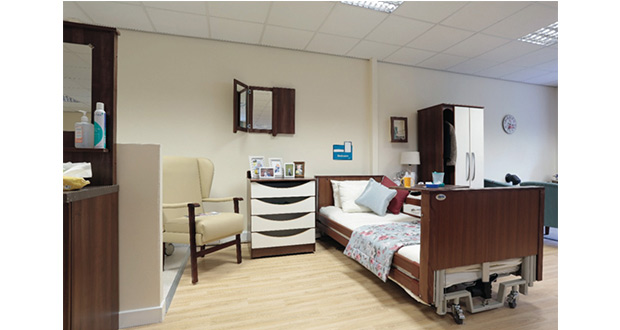How To Adapt Your Environment For Dementia Care
 With one in 14 UK citizens over the age of 65 suffering from dementia , it’s clear that the care sector and society as a whole needs to develop a much greater understanding of cognitive conditions and how to care for sufferers in ways that promote their wellbeing, independence and dignity.
With one in 14 UK citizens over the age of 65 suffering from dementia , it’s clear that the care sector and society as a whole needs to develop a much greater understanding of cognitive conditions and how to care for sufferers in ways that promote their wellbeing, independence and dignity.
We know that the physical environment has a far-reaching impact on those with dementia. A recent blog by the dementia research centre at the University of Stirling stated: “Creating well designed desirable products and spaces, that take into consideration how people interact with their environment in its entirety, can considerably improve the lives of those living with dementia.”
Let’s look at some examples of this in practice.
Visual impairment
Sight loss and dementia frequently go hand in hand, with peripheral vision especially affected. This means that rooms should be set up to enable carers to approach patients from the front so not to startle them, and also with the bed positioned opposite the door so they can see who is entering.
Clear signage and simple room layouts will aid patients with impaired vision and poor short-term memory. Ensuring that rooms and corridors are well-lit, avoiding flowery patterns on fabrics, and using colours – and contrasts – appropriately can all contribute to reducing confusion and make everyday tasks more manageable. For instance, coloured plates can make food more easily distinguishable, and black floor mats should be avoided as they could be misinterpreted as a hole. This explains why wooden or coloured fall prevention mats are a sensible idea.
Loss of dexterity
It is best practice to use adapted cutlery and crockery for those with dementia. In fact, according to the expert dementia training organisation The Virtual Dementia Tour, the latest thinking is that care homes should encourage early stage dementia residents to use the ‘built up’ style of cutlery from the beginning so that if their condition worsens, they can already use it properly and will be able to do so for longer.
We would always advise using ceramic crockery as opposed to plastic, which can give the impression of treating residents like children.
In bedrooms, dementia-friendly wardrobes and dressers with large handles can be very helpful.
Peripheral neuropathy
Nerve damage in the extremities of the body is a common affliction as we age, and especially in dementia sufferers. For instance, washing and shaving can cause pain, meaning that it’s essential for carers to use gentle cleaning aids (such as wet and dry wipes) and soft bed linen.
Memory loss
Memory boxes or cabinets used to display photographs and other objects of sentimental value from a resident’s past can make them feel more at home and at ease. They also provide a way for carers to learn about the histories of those they are caring for and engage with them on a more personal level.
Auditory processing issues
It’s increasingly apparent that the auditory environment within a care home can significantly help (or hinder) residents who struggle to filter out background noise. The Social Care Institute for Excellence (SCIE) notes that “noise that is acceptable to care staff may be particularly distressing and disorientating for a person with dementia, especially at busy times of day such as shift change-over and mealtimes.”
For instance, something as simple as a clock that doesn’t tick can make a big difference. Call systems are a common source of agitation, and care homes should choose ones with the option of reducing or even completely silencing the alert within the patient’s room.
Every level of the care sector has much progress to make in understanding dementia and adapting care to better meet patients’ needs. The physical environment, from interior design to furnishings and equipment, is only one aspect of care but it plays a vital role and even small changes can make a big difference to quality of life.
